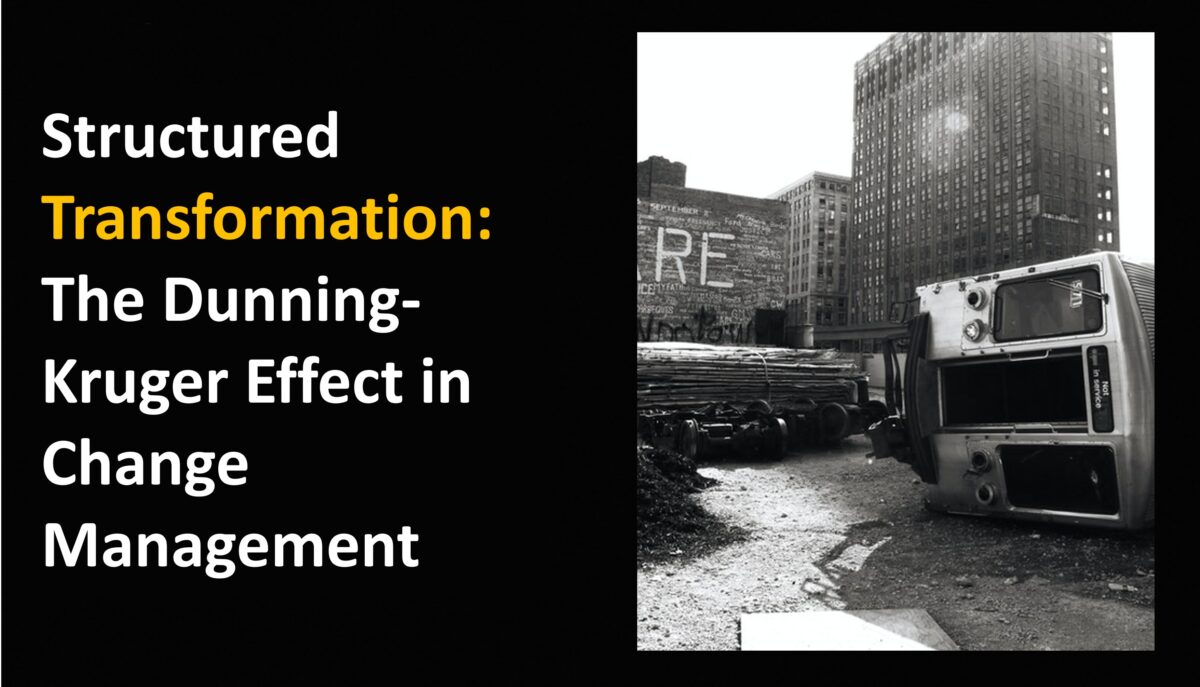J.C. Penney’s $1B loss under a celebrated CEO wasn’t about strategy—it was about overconfidence. The Dunning–Kruger Effect shows up in change management more often than we admit: leaders underestimate complexity, teams assume they’ll “figure it out,” and culture gets sidelined.
In my new article, I explore how this bias derails transformations—and what to do instead.
Another Cautionary Tale: The Dunning–Kruger Effect in Change Management — When Overconfidence Derails Transformation
Consider J.C. Penney’s 2012–13 transformation under CEO Ron Johnson—a proven executive from Apple and Target. He confidently rolled out “fair and square” pricing and drastically redesigned stores. But he underestimated how deeply customers valued coupons and markdowns. He moved fast, but without testing or aligning with the brand’s culture. Within 14 months, revenue had fallen 25%, the company lost nearly $1 billion, and thousands of jobs were cut.
This dismissal of core stakeholders and cultural dynamics is a textbook case of the Dunning-Kruger Effect in transformation initiatives.
What Is the Dunning–Kruger Effect?
At its core, it’s a cognitive bias: those with limited knowledge often overestimate their competence, while experts tend to underestimate it.
In transformation contexts:
- Leaders may assume change is simple: “just tweak processes,” or “everyone will adapt.”
- Teams may overload under the assumption that “we’ll figure it out.”
Why It Matters in Change Management
Change is complex, high-stakes, and fraught with resistance.
The Dunning–Kruger Effect manifests as:
- Ignoring stakeholder pushback
- Rushing without embedding governance or testing
- Overconfidence in “patch-on-the-fly” solutions
And the consequences? Delayed returns, broken morale, failed programs.
A Framework to Mitigate It
- Diagnose before you decide—use structured interviews, quick diagnostic sprints to ground assumptions.
- Surface hidden risks—on culture, governance, stakeholder alignment.
- Bring in experienced leadership early—not just internal availability.
- Test early, iterate fast—pilot first, scale later.
- Stay humble—be prepared to course correct mid-transformation.
Why Familiarity Matters
Transformations often fail not for lack of intent, but because they’re treated like “change on the side.” The Dunning–Kruger trap lies in ignoring the hidden layers—culture, governance, resistance, and BAU alignment.
Skill, experience, and discipline are not optional. Without them, transformation becomes a mirage.
